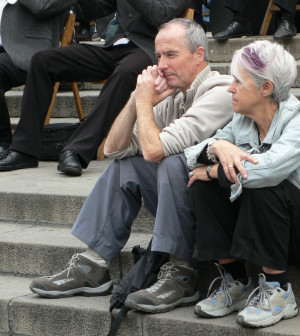- Navigating Your Midlife Crisis: Embracing New Possibilities
- City Raccoons Showing Signs of Domestication
- Mapping the Exposome: Science Broadens Focus to Environmental Disease Triggers
- One Week Less on Social Media Linked to Better Mental Health
- Your Brain Changes in Stages as You Age, Study Finds
- Some Suicide Victims Show No Typical Warning Signs, Study Finds
- ByHeart Formula Faces Lawsuits After Babies Sickened With Botulism
- Switch to Vegan Diet Could Cut Your Greenhouse Gas Emissions in Half
- Regular Bedtime Does Wonders for Blood Pressure
- Dining Alone Could Mean Worse Nutrition for Seniors
Does Botox Actually Rejuvenate Skin?


Botox injections might do more than simply paralyze facial muscles to create a more youthful appearance. New research suggests the anti-aging treatments may also turn back the clock on facial skin itself, aiding its ability to stretch and recoil.
Botox treatment seems to promote production of elastin and collagen, a pair of proteins that make young skin tight, firm and flexible, said lead author Dr. James Bonaparte, a plastic and reconstructive surgeon and an assistant professor at the University of Ottawa in Canada.
“We found if we treat people with Botox using standard techniques, we see an increase in elasticity, which is what you’d see in people with more youthful skin,” Bonaparte said. “We’re actually seeing evidence that we, for some reason, are getting more elastin and collagen in the skin.”
As people age, repeated facial expressions wrinkle the face, Bonaparte said. At the same time, levels of elastin and collagen decline in the skin, causing it to sag. These two factors contribute to facial aging.
Botox is made from the same bacterial toxin that causes botulism — onabotulinum toxin A — and is used to smooth out skin by paralyzing facial muscles, explained Dr. Scot Glasberg, a New York City plastic surgeon and president of the American Society of Plastic Surgeons.
However, some experts had noted that skin treated with Botox also appeared to regain some elasticity and pliability — an effect not fully explained by the paralyzing of facial muscles, Bonaparte said.
To examine this more closely, Bonaparte and his colleagues gave 48 women, average age 55, their first-ever Botox injections, treating the skin between the eyebrows and around the eyes. They then followed the women for four months to see how the injections affected the skin.
They found that the Botox increased the stretchiness and elastic recoil of the women’s faces, causing changes in composition that mimicked more youthful skin. The researchers found the effect was similar to radiofrequency skin tightening, an aesthetic procedure that uses radio waves to heat skin tissue and stimulate collagen production.
At the same time, the researchers found no evidence that the tightening and firming of the face was a byproduct of inflammation or swelling caused by the Botox shots themselves, which had been suspected as a cause, Bonaparte said.
The effect lasts roughly as long as the effectiveness of a round of Botox injections — about three to four months, the researchers concluded.
“It’s temporary, but it’s not a byproduct of swelling, and it’s not a byproduct of muscle contraction. It’s something that’s intrinsic to the skin itself,” said Dr. Catherine Winslow, an Indianapolis plastic surgeon who wrote an editorial accompanying the new study.
There’s no clear reason why Botox has this effect. Bonaparte believes that the cells that produce elastin and collagen may contain a receptor that somehow responds to Botox. If that’s the case, future drugs could target that receptor with even better results than those produced by Botox.
“We may be able to develop some medications that don’t require injection, that you can apply topically and get the same skin rejuvenation effect as Botox,” he said.
On the other hand, Winslow believes that Botox might have an antioxidant effect on skin tissue. The muscles of the face produce waste products as they move, and she thinks that these toxins damage the skin’s elastin and collagen. By paralyzing the facial muscles, she suspects Botox gives the skin a chance to heal itself from this damage.
Glasberg thinks that the answer may be even simpler — the paralysis caused by Botox simply gives collagen and elastin a chance to recover from constant motion and settle back into position.
The research team will next investigate whether extended use of Botox can have long-term benefits for the face, Bonaparte said. Prior studies have shown that people who frequently use Botox are able to get by with lower doses over time, and can go longer periods between injections.
The findings are published online May 21 in JAMA Facial Plastic Surgery.
More information
For more about Botox, visit the U.S. National Institutes of Health.
Source: HealthDay
Copyright © 2025 HealthDay. All rights reserved.










